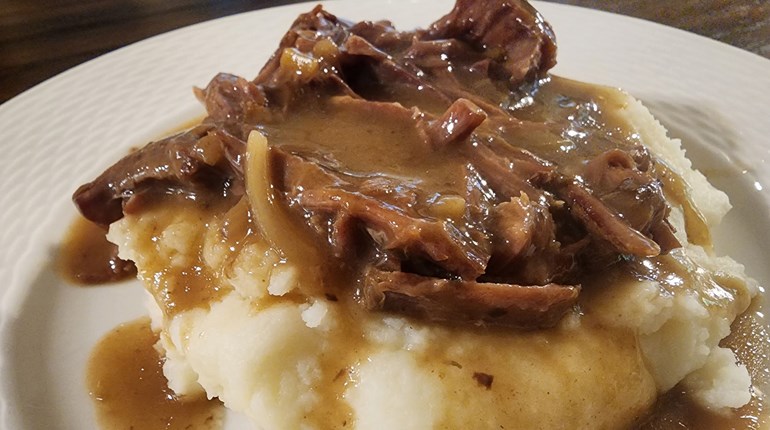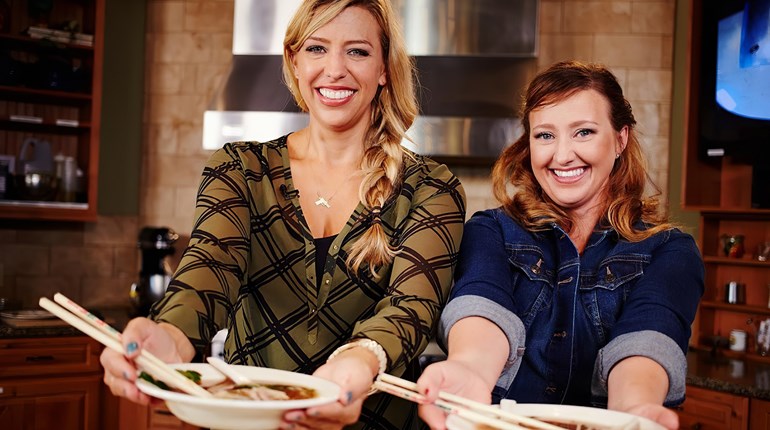1. Don’t Be Afraid of Salt
Using a small amount of salt to season wild game steak before cooking actually helps keep the meat moist during cooking. You can salt a steak far in advance, or just before it hits the pan, but it is important to let it come to room temperature before searing, ideally in a cast iron skillet, so that the heat conducts evenly throughout the meat. Salt combined with a hot pan will also help the meat form a crust on the outside, further locking in moisture.
2. Lemon Balances Salt
If by chance a piece of meat or any dish does come out a bit too salty, the acid in lemon juice will balance it. Simply squeeze the lemon over your dish and taste it again. Acid and salt are the yin and yang of cooking.
3. Begin With Oil, End With Butter
I always start the pan with a bit of grapeseed oil because it has a higher smoking point than olive oil. But I always finish a wild game steak with a dollop of butter. Oil is great for browning meat and caramelizing the proteins at the surface to lock in moisture. But adding a bit of butter at the end to finish the steak and glaze it, provides extra flavor. The butter browns along with the steak, giving it a rich, nutty quality. Sometimes I’ll also throw in a few sprigs of fresh thyme with the butter and baste the steak with a spoon for a few minutes as the butter melts, which slows down cooking by cooling the steak’s surface.
4. Let It Rest
It is important to let all meat rest for at least 15 minutes before you serve it. This allows the juices to retreat back into the center of the meat as it cools. Cutting into it too soon will release all of the juices onto the cutting board—you’d much rather have them on your plate! That is where the flavor lies. It is ideal to have tin foil ready and completely enclose the meat in tin foil before cutting into it. That is when I often add flavoring elements, like a dash of apple juice to ribs or a sprinkle of dry rub. I will often let them sit in the tin foil for up to an hour. This means you can certainly plan ahead and start cooking before your guests arrive. Transferring the tin foil packages to empty coolers is another way to ensure they stay warm. If you don’t let the meat rest at all, you’ll find that it has a grainy, mealy texture, which can be particularly pronounced in wild game.
5. Don’t Touch
Resist the urge to move the meat once it hits the pan or grill. You should actually only touch it with tongs while it cooks once in order to flip it, otherwise it should be left unmoved. A piece of protein isn’t ready to be moved until it is completely loose from a pan or grill. If it sticks at all, it isn’t ready. As it sits and cooks the proteins are caramelizing and creating a surface that will lock in moisture. By moving it too early, you tear the surface and release the juices. This is especially important for wild game.
6. Aging Costs Money, So Most Meat Could Be Better.
Aging is a change in the activity of muscle enzymes. At death, the enzymes begin to deteriorate cell molecules indiscriminately. Large flavorless molecules become smaller, flavorful segments; proteins become savory amino acids; glycogen becomes sweet glucose; fats become aromatic. All of this deterioration and breakdown of the cell molecules creates intense flavor, which improves further upon cooking.
This shift in enzyme activity also tenderizes the meat by weakening the proteins that hold things in their place. The collagen in connective tissue also begins to weaken, causing it to dissolve into gelatin during cooking, and help it retain moisture.
Most grocery stores and restaurants won’t sell you well-aged meat because they lose money both in time and water weight. But you can age your meat at home. Large, muscular cuts can be left to sit out in the refrigerator for several days. Backstraps and other tender cuts, meanwhile, can be wrapped in plastic and left in the fridge. Any brown tough bits that form on the outer layer as the meat oxidizes can be trimmed off before cooking.
Share your favorite cooking tips with us in the comments! Let’s learn from each other.




































